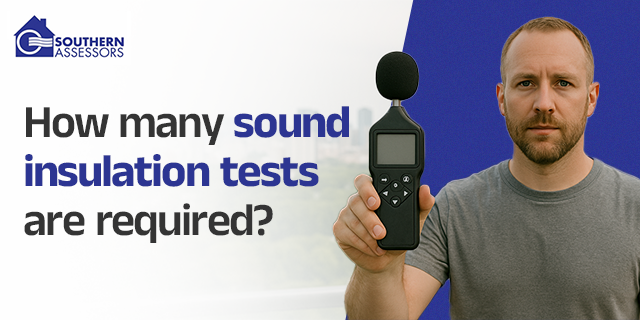Suppose you’ve just moved into a lovely new flat, but every little sound made by your neighbour can be heard clearly. That’s why sound insulation is important. It’s the unseen wall that keeps outside noise away and helps keep inside noise inside, creating a calm and private area.
So, how do people involved in construction check that sound insulation is effective? That’s when sound insulation testing is needed. In this post, we will address the common question “How do you test sound insulation?” and the overall importance of sound insulation.
Understanding the Basics: What is Sound Insulation Testing?
It’s important to know how sound insulation is tested before getting into the specifics. A sound insulation test is done to check the efficiency of a wall or floor at controlling noise. Most apartments and residential buildings use it to ensure their neighbours are not disturbed. Most tests are designed to analyse two types of sound:
- Airborne sound: Things like talking, TV noise, or music that travel through the air.
- Impact sound: Noises caused by physical impact, like footsteps or objects dropping on the floor.
In a typical test, a loudspeaker plays noise in one room, and specialised equipment measures how much of that noise passes into the next room. For floors, tapping machines simulate footfall sounds.
Why Do We Need More Than One Test?
It’s possible to question: why can’t a single test check for every possible problem? The answer is simple! Different sections of a building behave differently to sound. For example:
- The materials and the way a wall is built may mean the living room wall blocks noise better than a bedroom wall.
- Floors between flats might handle footstep noise differently from walls that separate two apartments.
To get an accurate picture, testing needs to cover both airborne and impact sound in various parts of the building. That’s why you can’t rely on a single test to certify an entire block.
So, How Many Tests Are Required?
The size and design of the building decide how many sound insulation tests are needed. Still, most people follow the same basic guidelines. When it comes to new build flats or homes:
- At the very least, two tests of airborne sound should be made between living rooms or bedrooms using separating walls.
- At least two airborne sound tests on separating floors.
- At least two impact sound tests on separating floors.
This means that even in a small project, you’re usually looking at a minimum of six tests. Larger or more complex developments might require more, depending on how many unique wall or floor types are involved.
It’s a good idea to involve a testing professional [right at the start of your project] if you need sound insulation testing in Berkshire or Oxfordshire.
Regional Considerations: Why Local Expertise Matters
Builders and homeowners in the UK often turn to regional specialists for sound testing because local knowledge matters. Having experts who know local building practices on your team is beneficial. These experts ensure:
- Don’t take tests that aren’t necessary.
- Find out about problems early so the fixes don’t become expensive.
- Check that your test results are up to the standards set by your area and the country.
Final Thoughts
Sound insulation testing in Wiltshire is a foremost need that helps you to maintain complete privacy. Be sure to seek assistance from experts to gain more detailed information about this intricate topic. Connect with the Southern Assessors team to find relevant solutions at affordable pricing points.


